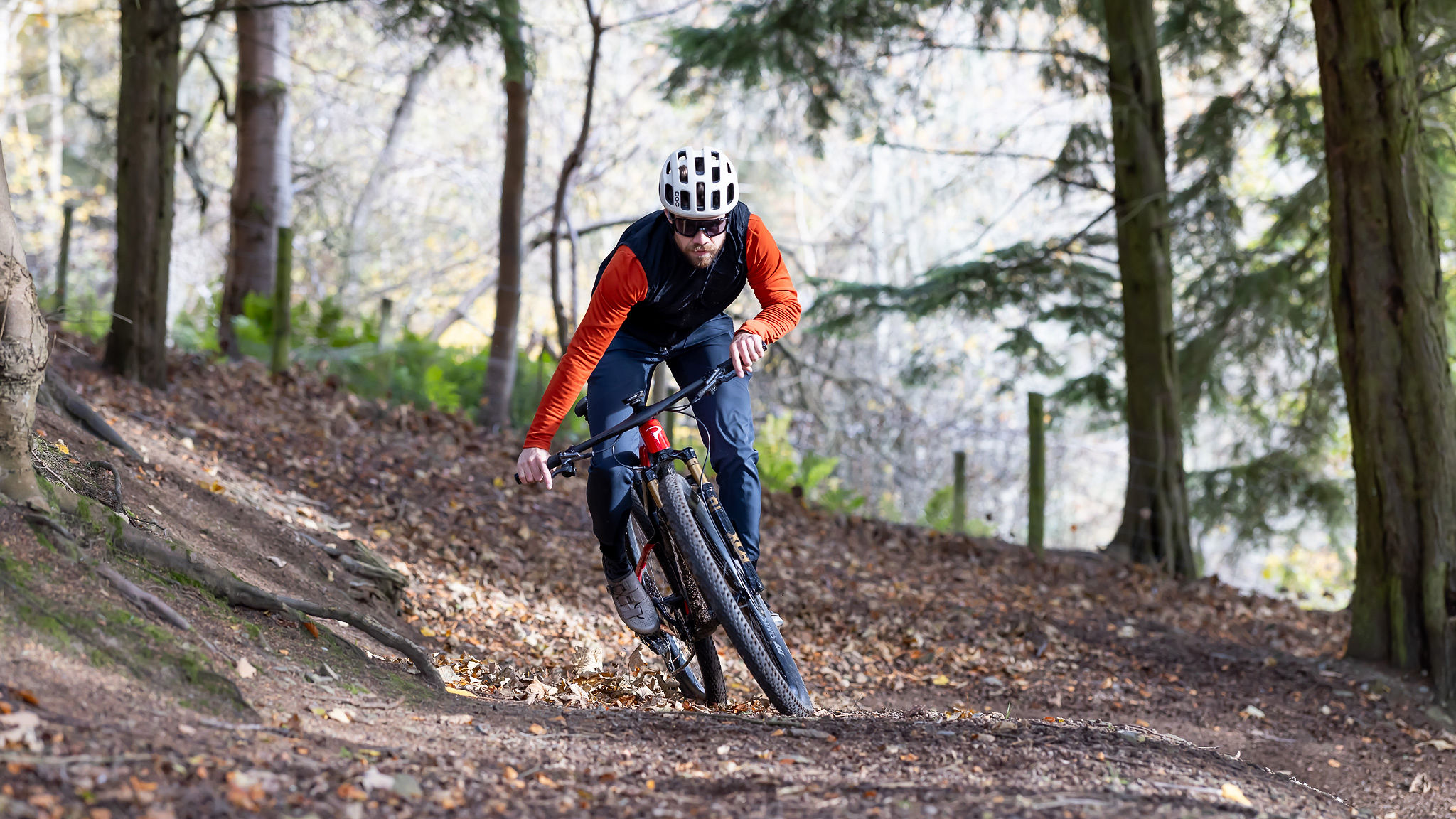Best mountain bike goggles 2025 – top-rated models that provide clarity and protection on the trails
The best MTB goggles will keep your sight clear and your eyes protected from dirt, rain, and sunlight and here are the top models we've tested
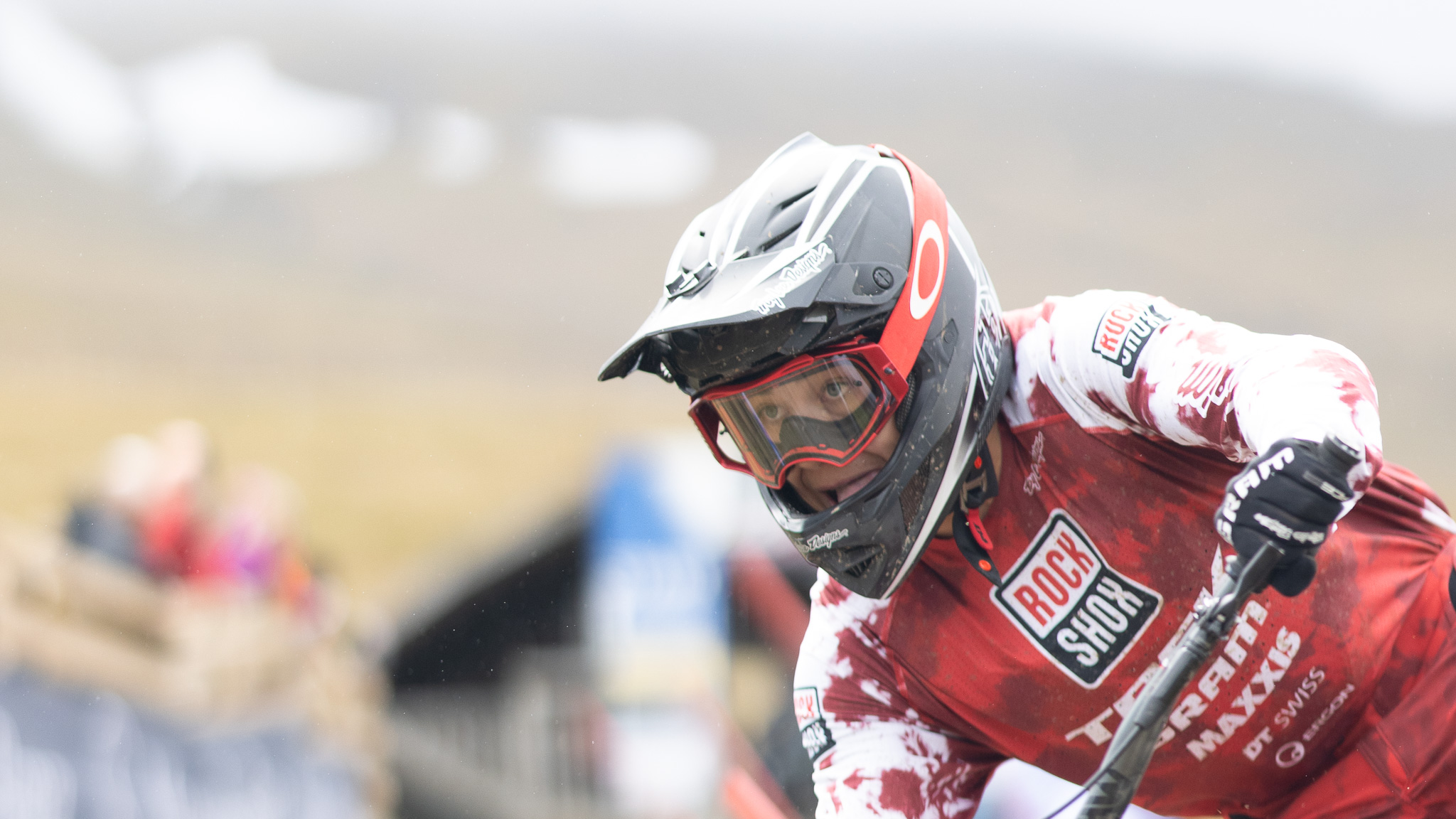
The best mountain bike goggles will ensure unprecedented coverage and eye protection. They will also give a more secure fit when compared to mountain bike sunglasses. Sunglasses are generally a lighter and well-ventilated solution to eye protection. Still, for DH, enduro and aggressive trail riding, goggles do a far better job when it comes to keeping your eyes safe and clear of debris.
Most of the best mountain bike helmets are designed to accommodate goggles and should fit securely around your helmet. MTB goggles will fit snuggly against the face using foam padding with no chance of shaking loose, no matter how rough the trails get. The trade-off for the added protection is goggles can get hotter than sunglasses and aren't something you'll want to wear if you have a massive day with lots of climbing ahead.
Best mountain bike goggles
Why trust BikePerfect
The quick list
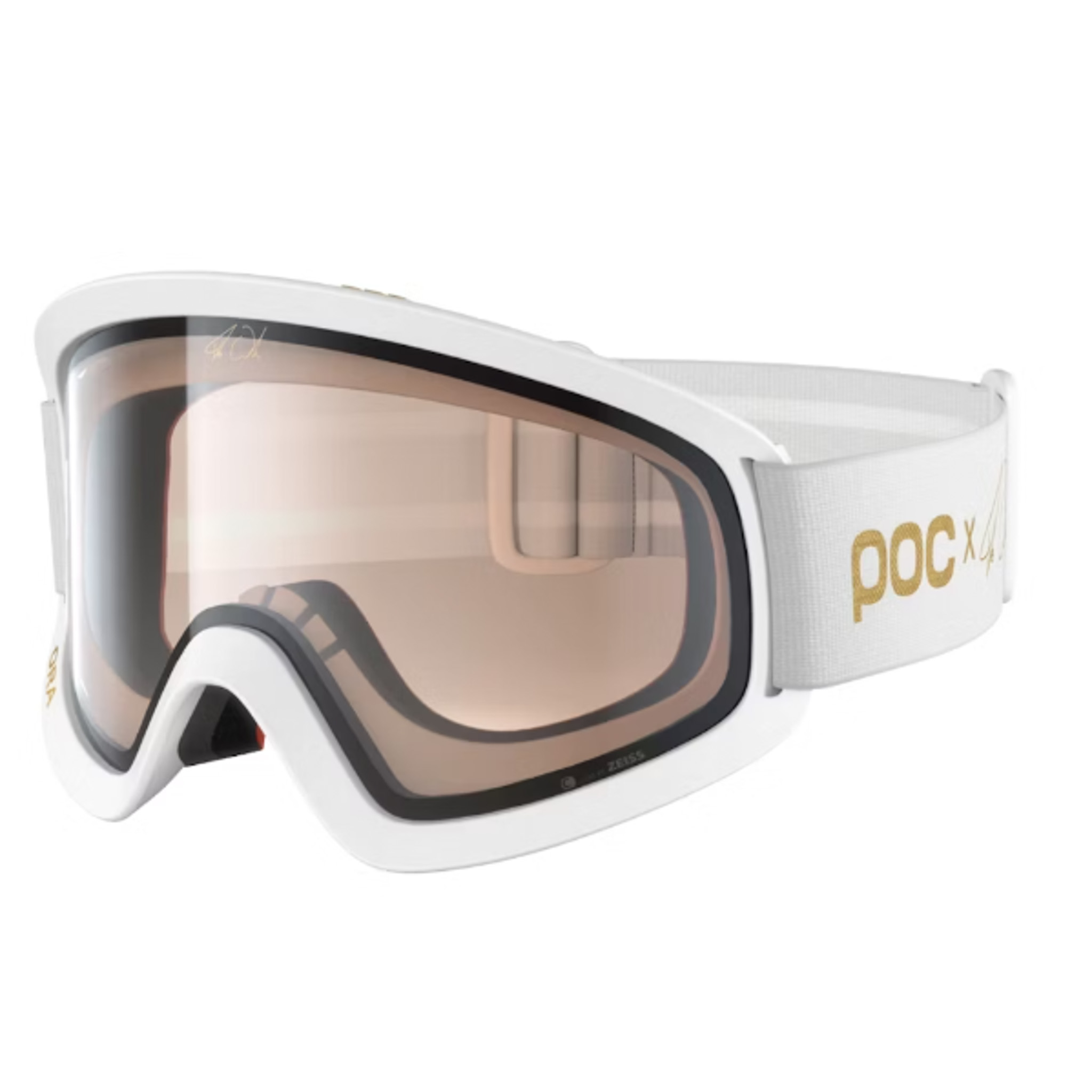
Best MTB goggles overall
The POC Ora delivers superb eye protection for all types of MTB riding. The comfortable and wide frame gives an unobstructed field of view and the Zeiss lens delivers optical clarity which allows an improved level of protection over sunglasses.
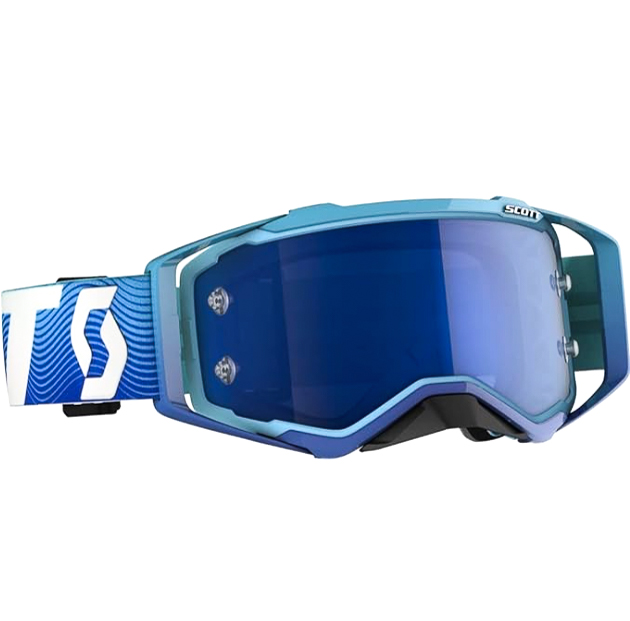
Best MTB goggles for vision
Scott claims the Prospect has one of the largest fields of view in an MTB goggle. So if a wide and unobstructed view is on your list when looking for MTB goggles then these tick all the boxes.
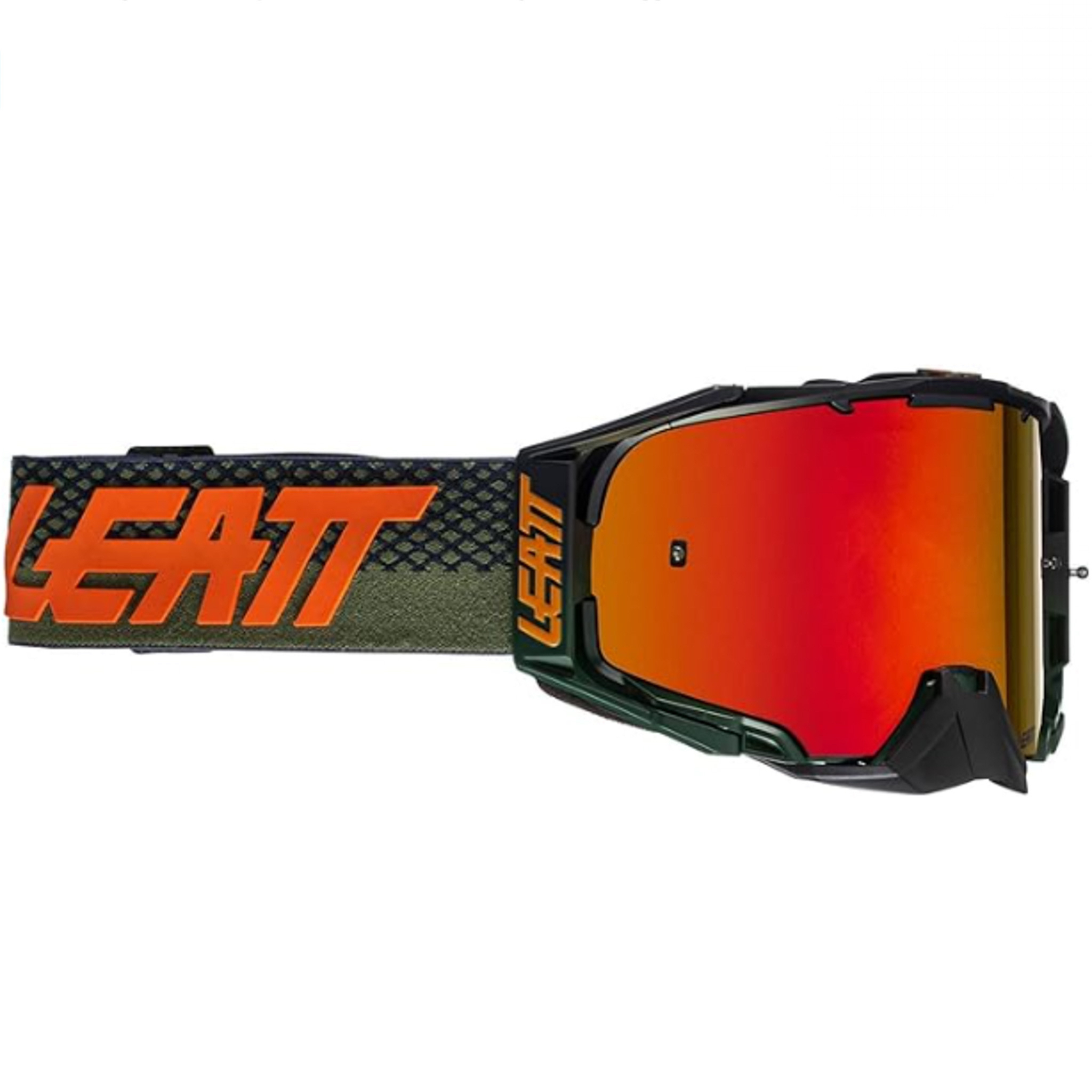
Best MTB goggles for durability
The Leatt Velocity 6.5 is literally bulletproof and meets the US Military Ballistic Impact Standard. The lens therefore is extremely durable and delivers huge amounts of protection.
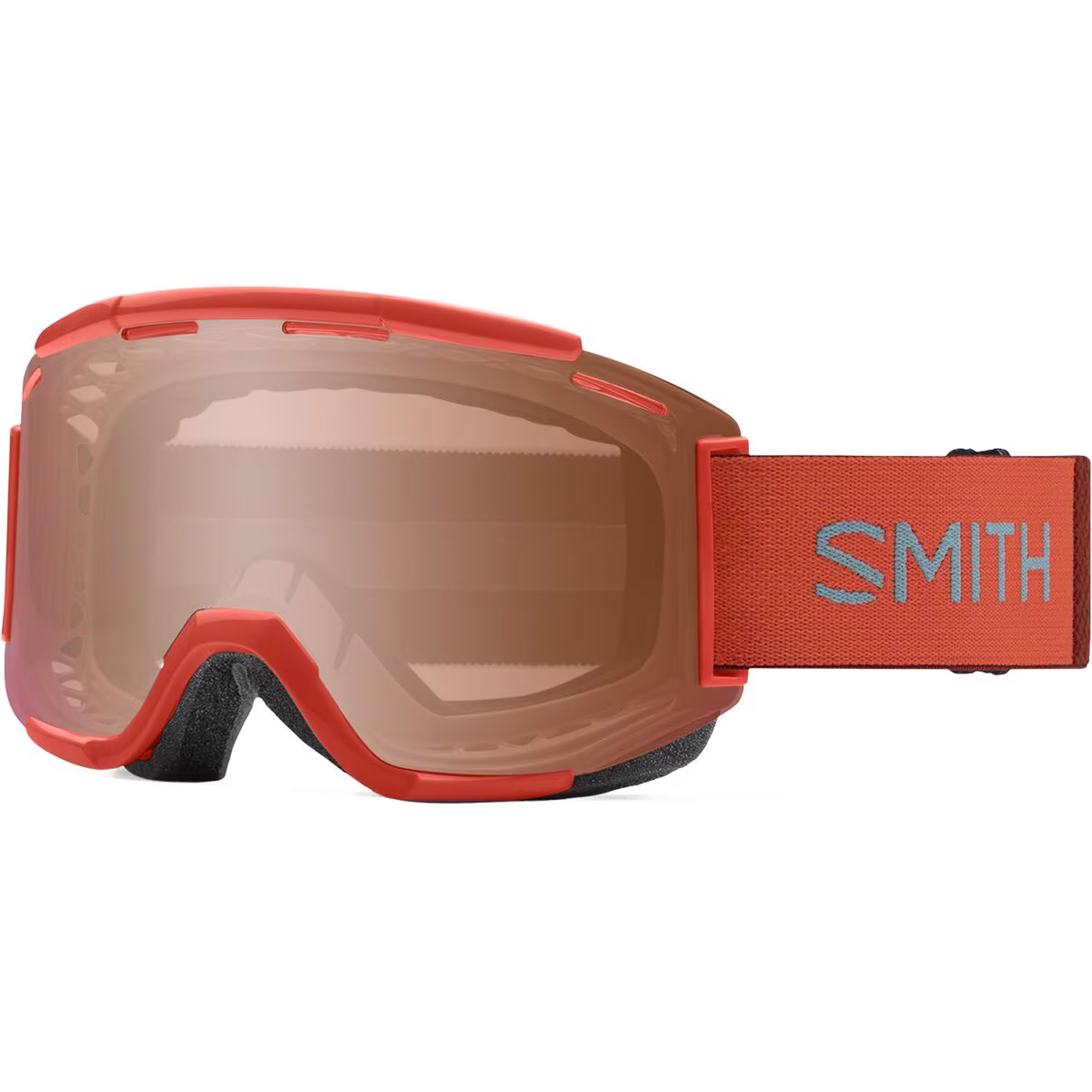
Best MTB goggles for ventilation
The Smith Squad MTB goggles frame features loads of ventilation ports, spaced well around the entirety of the lens, and helps reduce fogging and unwanted condensation.
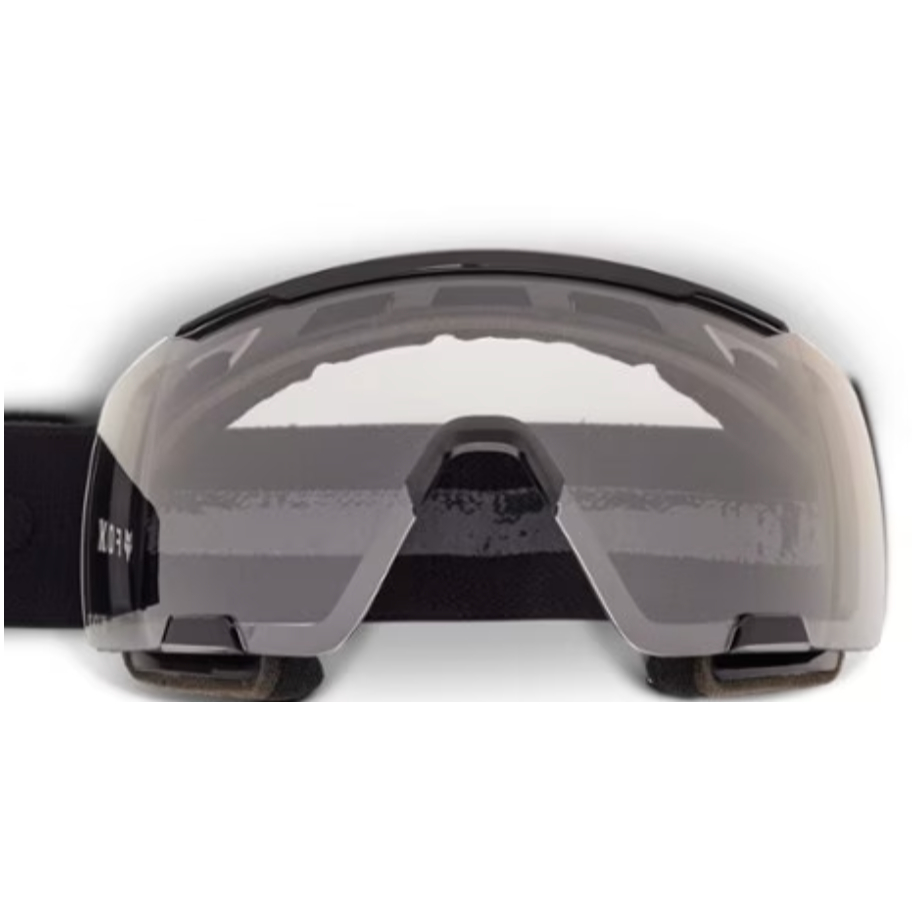
Best MTB goggles for open-face helmets
Well-ventilated and lightweight, Fox has designed the Purevue to work specifically with open-face helmets.
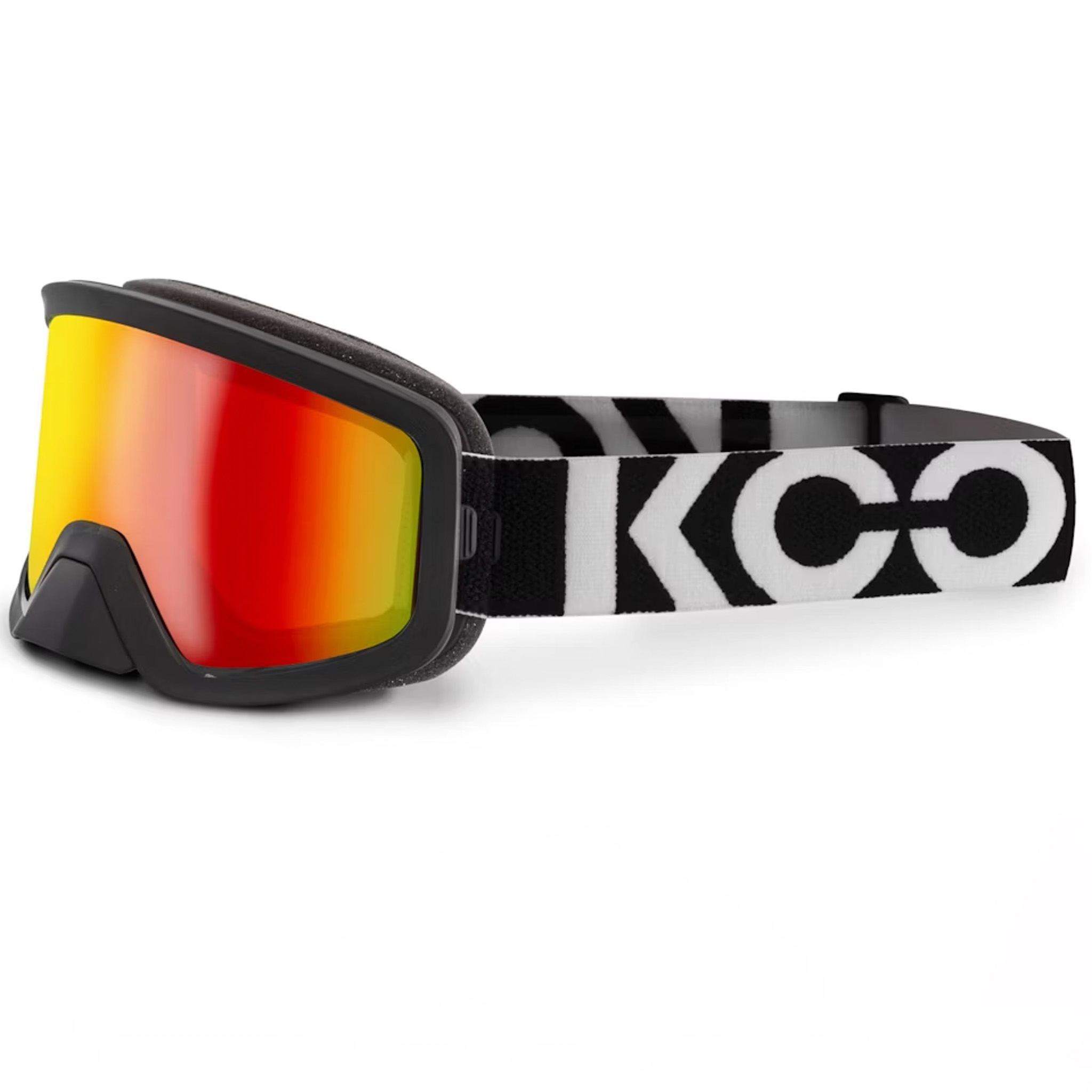
Best MTB goggles for optical clarity
The Koo Edge goggles offer crystal-clear Zeiss lens clarity and it is truly exceptional, but the overall package is let down by occasional fogging and comfort issues.
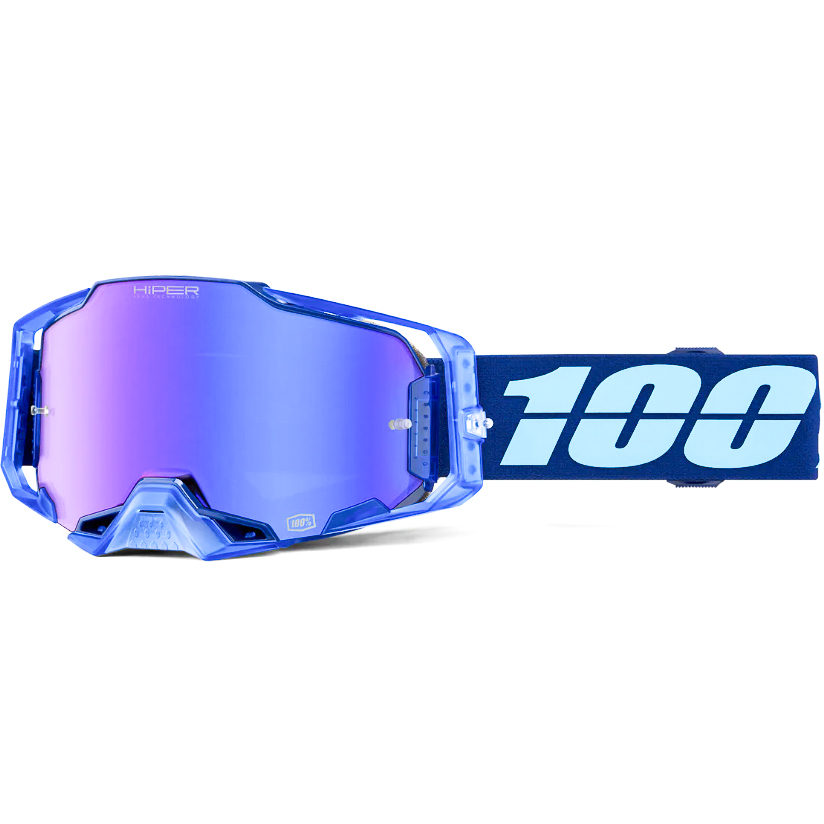
Best MTB goggles for comfort
The 100% Armega is the brand's premium MTB goggle boasting some impressive MOTO-inspired features that make them a comfortable and quality option.
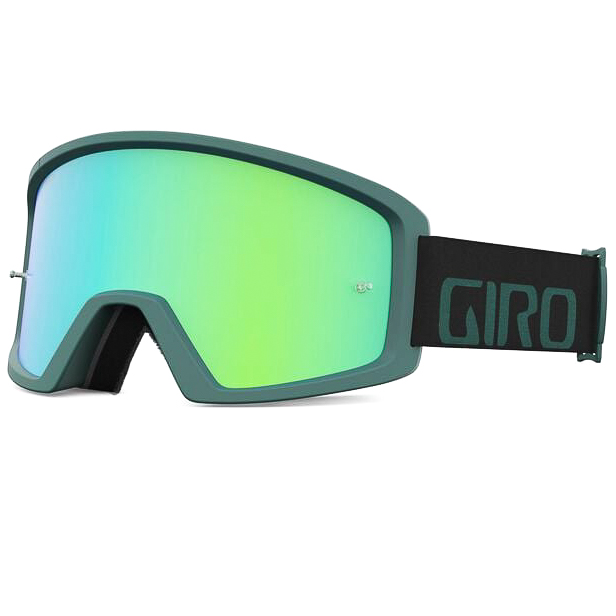
Best budget MTB goggles
The Giro Blok goggles have a ton of excellent design and performance features and they represent great value for money for those on the hunt for a budget MTB goggle.
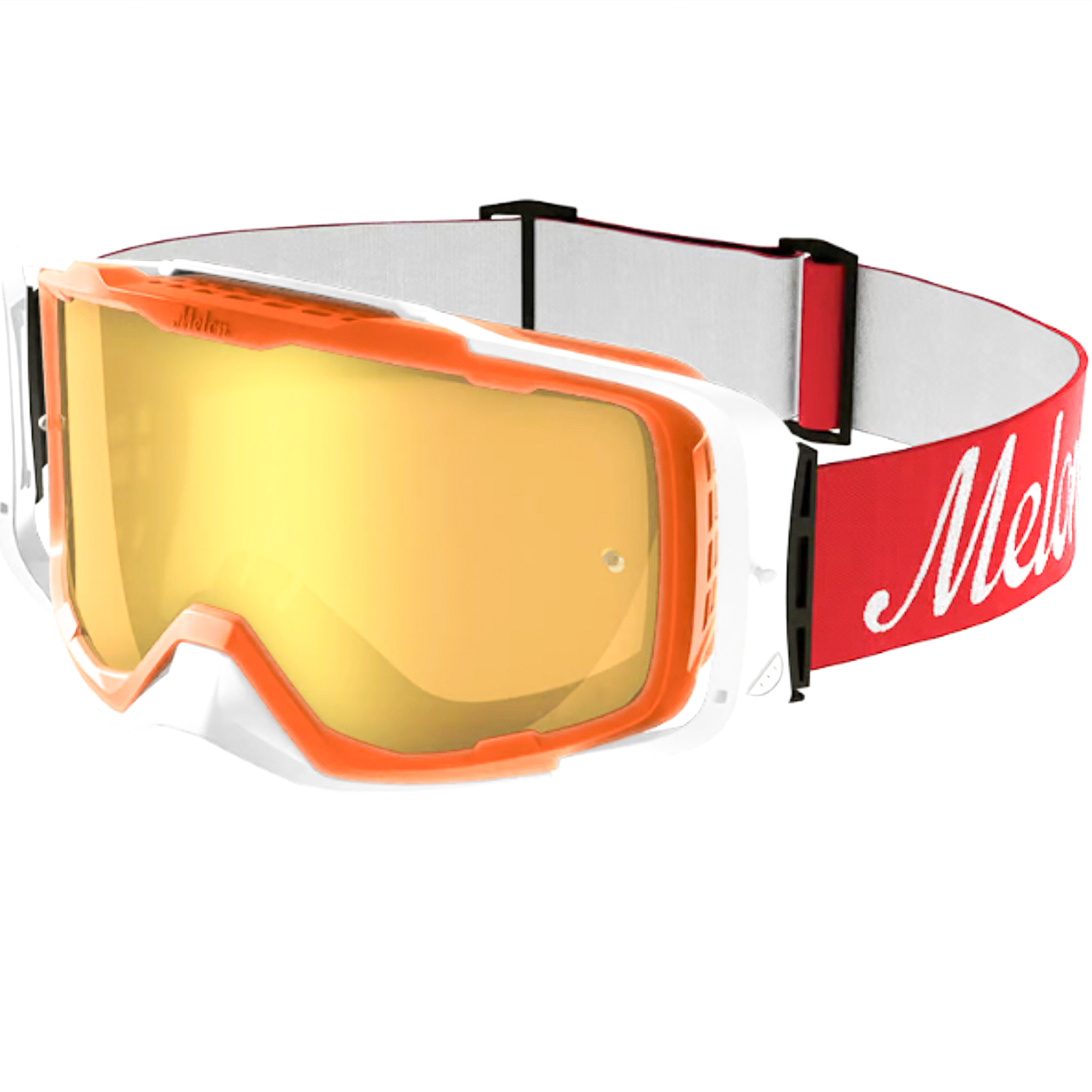
Best MTB goggles for customization
Melon Optics has a unique customization option that is backed up with a goggle giving a good level of protection, with a super comfy, well-vented performance.
1. Best overall
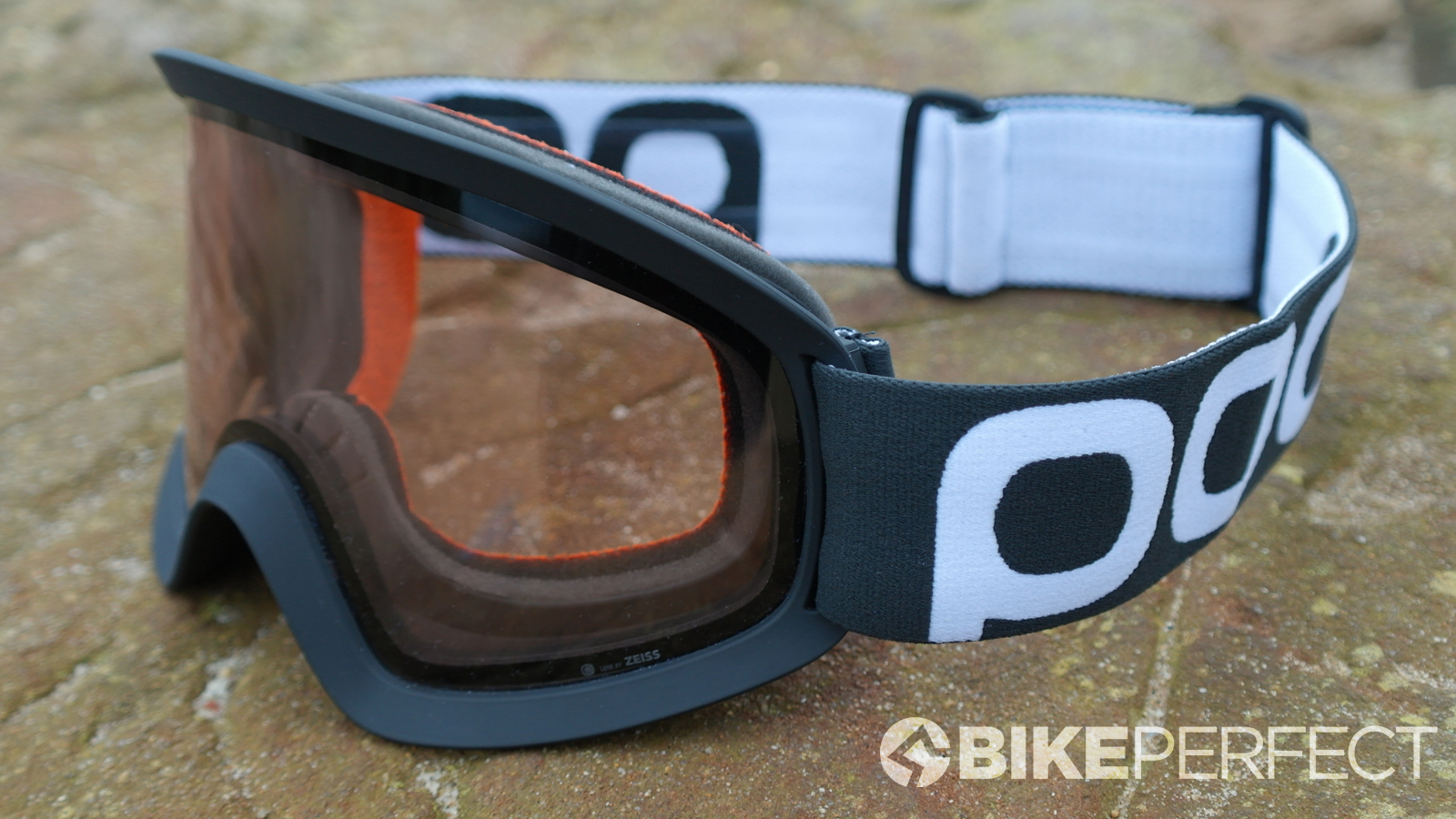
Specifications
Reasons to buy
Reasons to avoid
POC's Ora Clarity are the best overall in this best MTB goggles guide and has a host of design and performance features that meant they received a top rating from our tester – Dean Hersey. Dean said, "POC has done an incredible job balancing the main attributes required in an MTB goggle, offering up a perfect solution to eye protection for trail and enduro riders."
He also added that the Ora has a comfortable and wide frame, which gives an unobstructed field of view and the double-glazed lens from Zeiss boosts optical clarity.
The Oras come in two specs, a downhill version complete with pins for tear-offs, and a trail and enduro version with no pins or foam over the vents for maximum airflow.
Read the full review of the POC Ora Clarity for all the details.
Attributes | Notes | Rating |
|---|---|---|
Performance | Zeiss lens, impressive venting and wide field of view | ★★★★★ |
Comfort | Very comfortable and the best fitting | ★★★★★ |
Color and customization | Limited choice could be better | ★★★ |
Value for money | Priced well for the level of performance | ★★★★ |
2. Best for vision
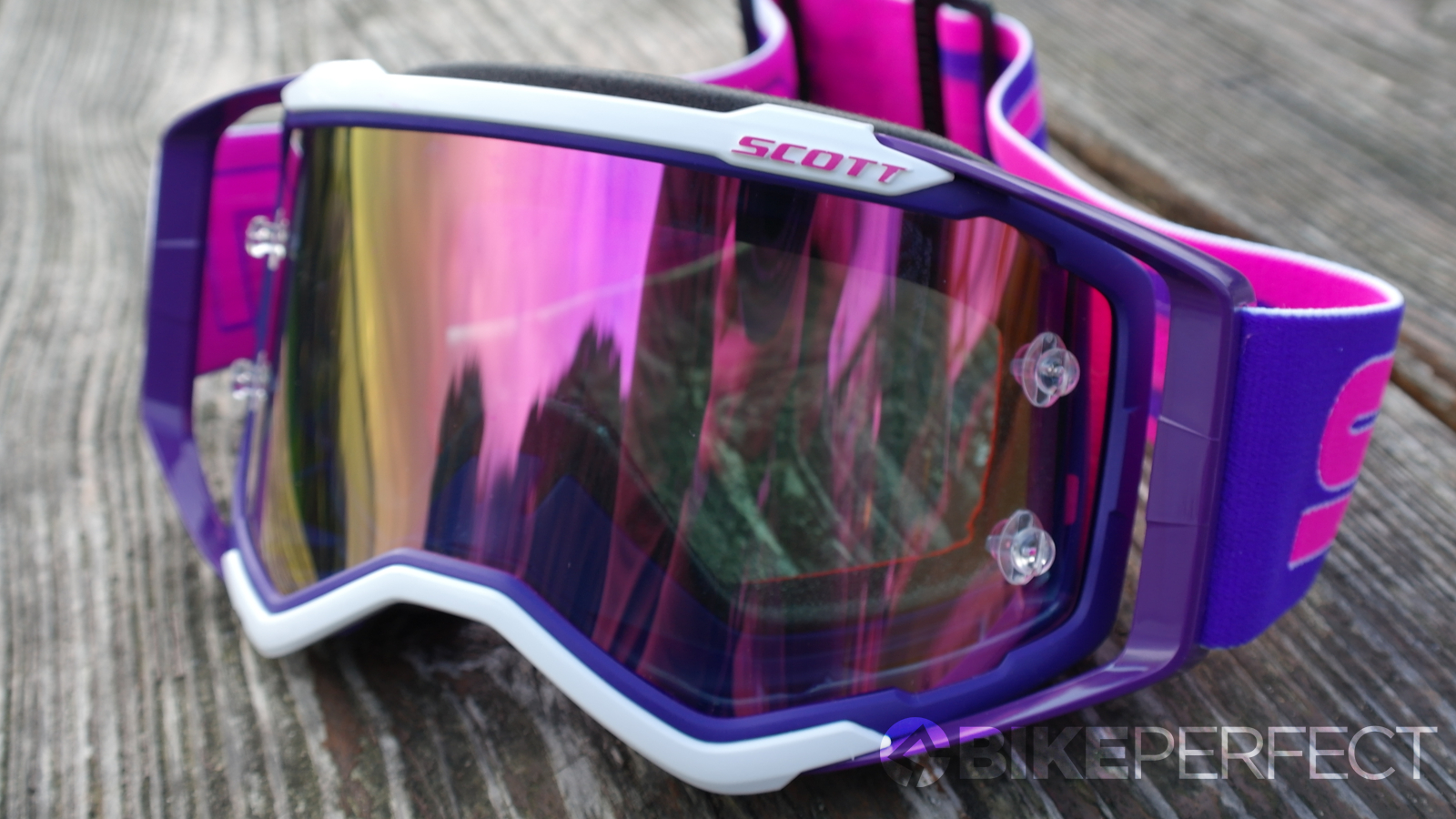
Specifications
Reasons to buy
Reasons to avoid
Scott claims the Prospect has one of the widest fields of view in the MTB goggles market and they use a curved lens to push the frame out past your peripheral vision.
On test, we found them to be almost too large, measuring 50mm taller than their predecessors – the Scott Hustle and they look slightly odd, especially with open-face trail helmets. However, the large sizes mean the Prospects offer a good level of protection, are easily adjusted to fit all shapes and sizes of full-face MTB helmets, and have a quality feel and finish.
Scott has also updated its Lens Lock system, which uses four locking pins that go through the lens to prevent it from popping out in a crash. Unfortunately, this system works a little too well, and lens swaps aren't the easiest.
Read our review of the Scott Prospect goggles for more information.
Attributes | Notes | Rating |
|---|---|---|
Performance | Huge field of view and quality finish | ★★★★ |
Comfort | Microfiber foam layer is up there with the best | ★★★★★ |
Colors and customization | Loads of color options | ★★★★ |
Value for money | Priced failry against rivals | ★★★★ |
3. Best for durability
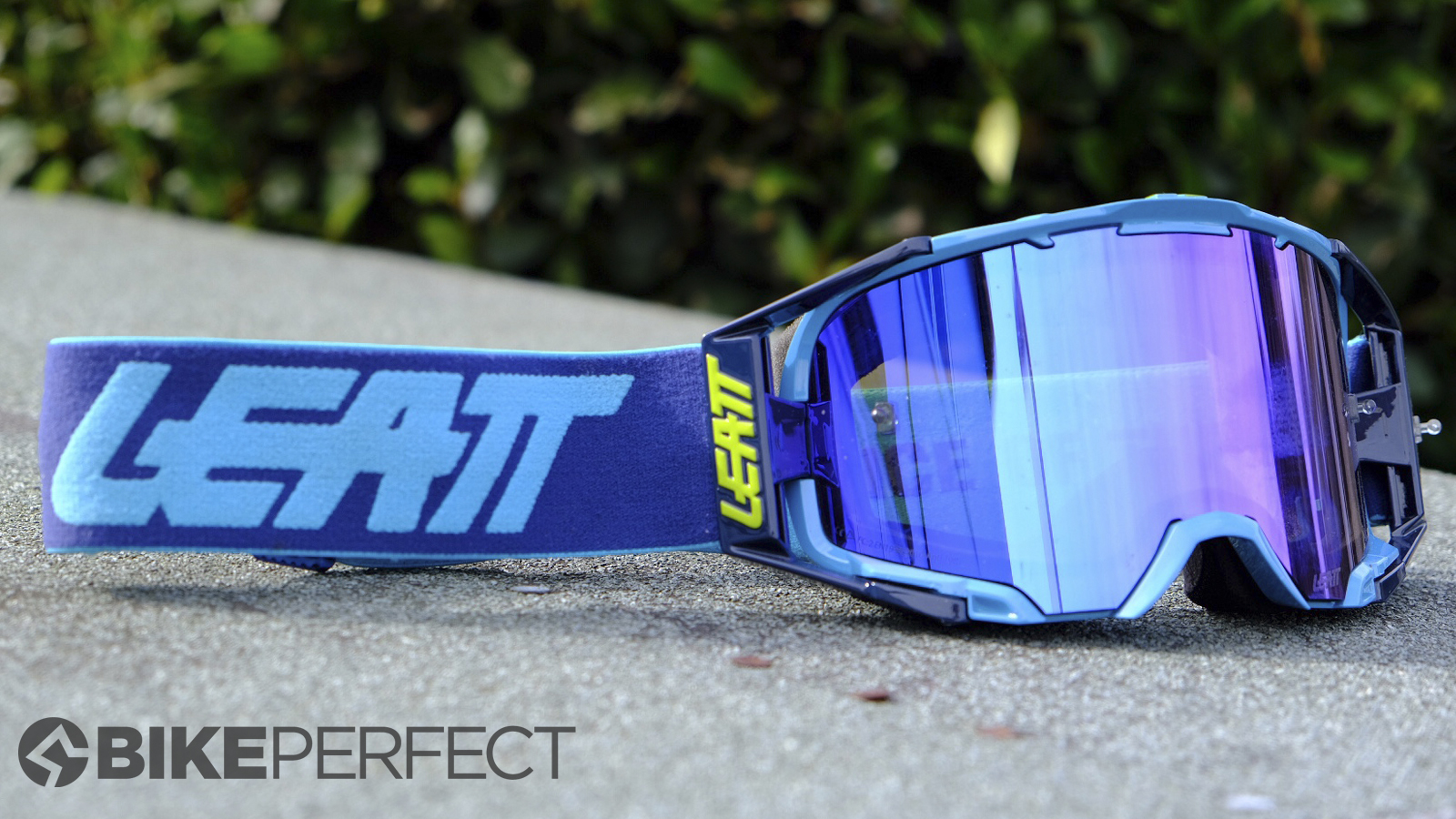
Specifications
Reasons to buy
Reasons to avoid
If out-and-out protection is your priority then the Leatt Velocity 6.5 goggles feature a legitimately bulletproof lens – the South African brand says the injection-molded lenses are bulletproof, meeting the US Military Ballistic Impact Standards. So they should handle anything the trail throws at you.
On review, Jim Bland was particularly happy with the "totally locked-in feel" and that the foam used by Leatt felt supportive and well-fitting. The deep fit also added a safe and secure feel when riding.
The lenses themselves are tear-off and roll-off ready, and Leatt supplies a pack of tear-offs which is unusual but great to see. Jim added that lens swaps were painless too.
Check out Jim's full review of the Leatt Velocity 6.5 goggles for all the details.
Attributes | Notes | Rating |
|---|---|---|
Performance | Bullet proof lens with a solid durable build | ★★★★ |
Comfort | Supportive and well-fitting | ★★★★ |
Colors and customization | Leatt offers 13 color options | ★★★★★ |
Value for money | Well positioned on price point | ★★★★ |
4. Best for ventilation
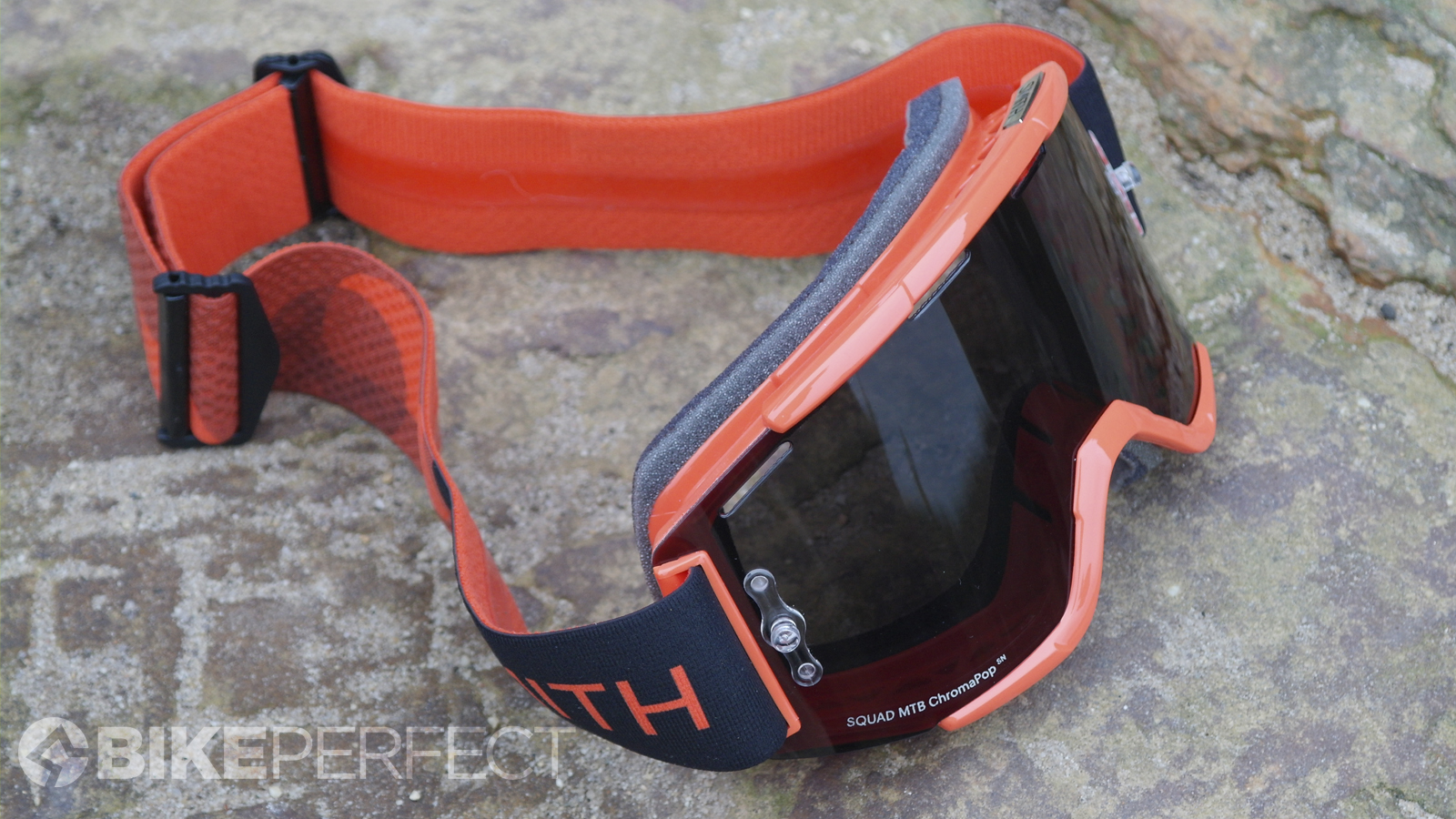
Specifications
Reasons to buy
Reasons to avoid
Smith claims to have tackled one of the big problems with MTB goggles – fogging. The Squad MTB frame features large ventilation ports that are spaced well around the entirety of the lens. Our tester was keen to point out that, "the open vents worked a treat, and kept condensation at bay" but, also stated, "the downside of such large ports was that occasionally, they allowed in small pieces of dust or mud."
The frame features a semi-frameless design and material has been kept to a minimum. The 'Fit construction' allows the goggle to distort and follow the contours and shape of any face.
If you're keen for more then read our full review of the Smith Squad MTB goggles for more details.
Attributes | Notes | Rating |
|---|---|---|
Performance | No fogging with plenty of vents and great lens | ★★★★ |
Comfort | Comfortable with a quality, secure fit | ★★★★ |
Colors and customization | Loads of choice | ★★★★ |
Value for money | Priced very nicely for performance | ★★★★ |
5. Best for open-face helmets
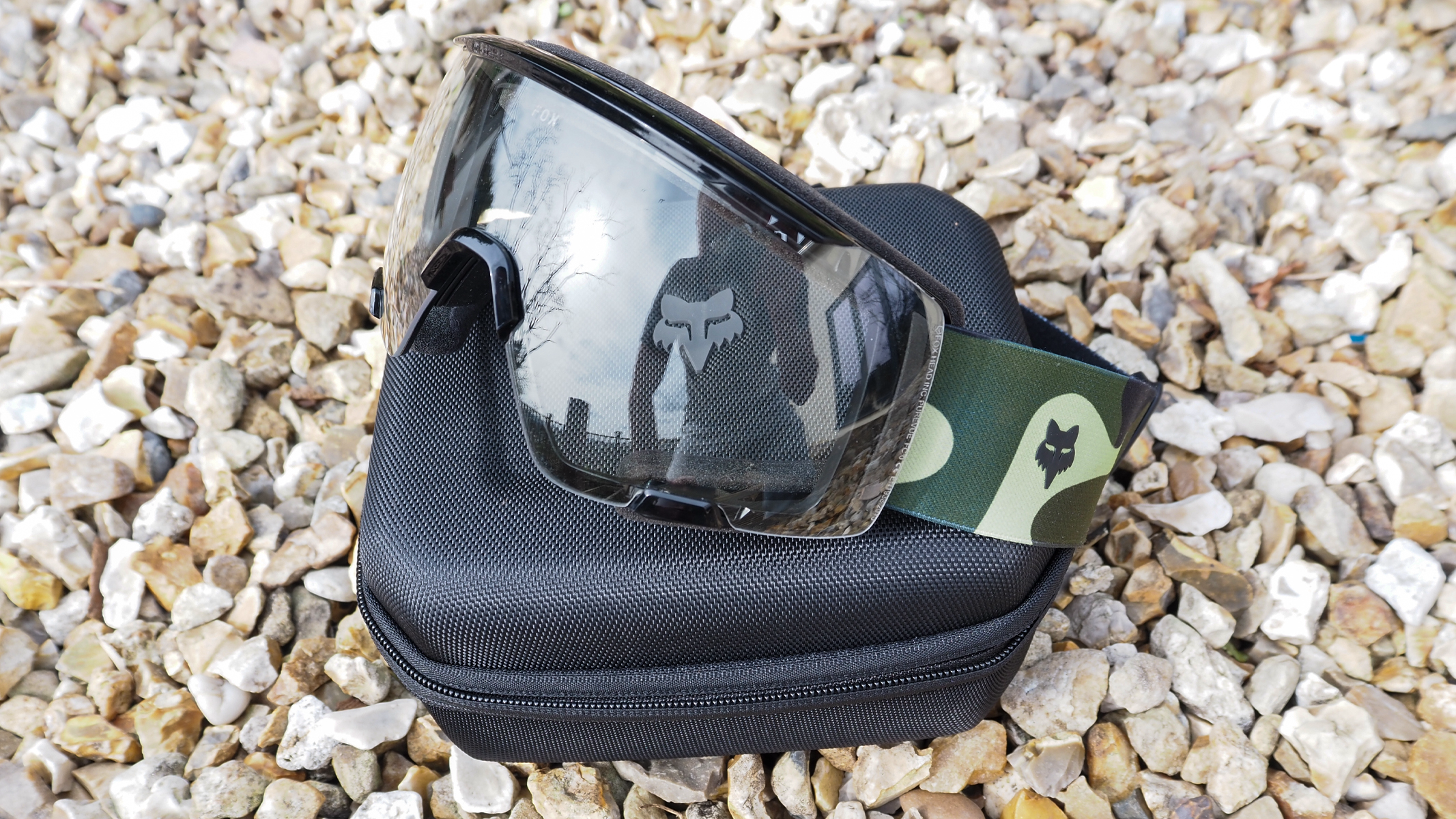
Fox Purevue
Our expert review:
Specifications
Reasons to buy
Reasons to avoid
Fox's Purevue fall somewhere between riding glasses and regular goggles on the MTB eye protection spectrum. While they are technically goggles, they have a glasses-like field of vision and optional nose-pieces.
The Purevues are primarily designed for open-faced helmets but they just fine with full-faces too. With less padding than regular goggles and fully open sections on either side of the nose, ventilation is really good and fogging is rare even when we sprinted up bike park climbs in a full-face.
The cut-outs on the lower edge of the lens means there's a little more pressure put onto the padded cheek sections, but our tester found the goggles were comfortable to wear for long periods making them ideal for trail and enduro runs.
At 102g, they're lighter than most but without an external frame, the lens is not as well protected as other goggles. The slightly domed lens shape is a little unusual and a look that some may shy away from.
Our test pair came with two clear lenses, but the red-colored Vivid option has been well received elsewhere. As well as an extra lens, you also get two nose pieces and everything comes in a sturdy storage case.
Attributes | Notes | Rating |
|---|---|---|
Performance | Unhindered vision and a lens that rarely fogs | ★★★★★ |
Comfort | Ideal for wearing for longer periods | ★★★★ |
Colors and customization | A reasonable number of styles available | ★★★ |
Value for money | Premium price but you get a lot for your money | ★★★★ |
6. Best optical clarity
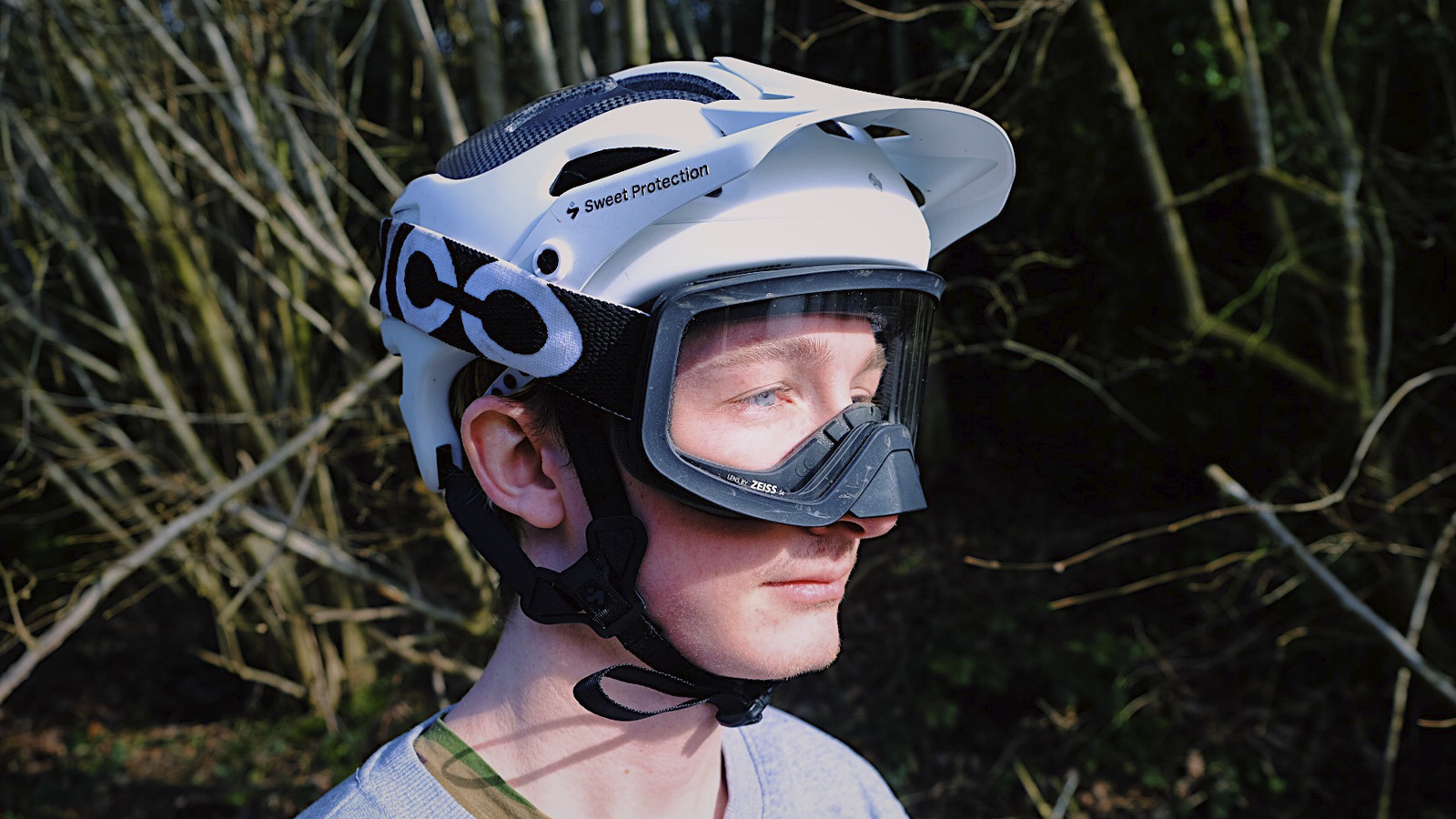
Specifications
Reasons to buy
Reasons to avoid
The lenses on the Koo Edge goggles are designed in partnership with the optical experts Zeiss. Therefore, they give maximum performance and clarity across a broad range of light conditions. There are multiple tint/color options and all of them are 100 percent UV protective.
We found that the Koo Edge goggles offered some seriously impressive quality of vision and it genuinely feels like the HD effect boosts precision and line-choice accuracy on the trail. However, they are susceptible to fogging, and the foam used lacked support and compromised comfort.
Read our full review of the Koo Edge mountain bike goggles.
Attributes | Notes | Rating |
|---|---|---|
Performance | Zeiss lens is great but occasional fogging | ★★★ |
Comfort | Foam used could be better | ★★ |
Colors and customization | Decent with variety of color choices | ★★★★ |
Value for money | Fairly expensive considering performance | ★★★ |
7. Best for comfort
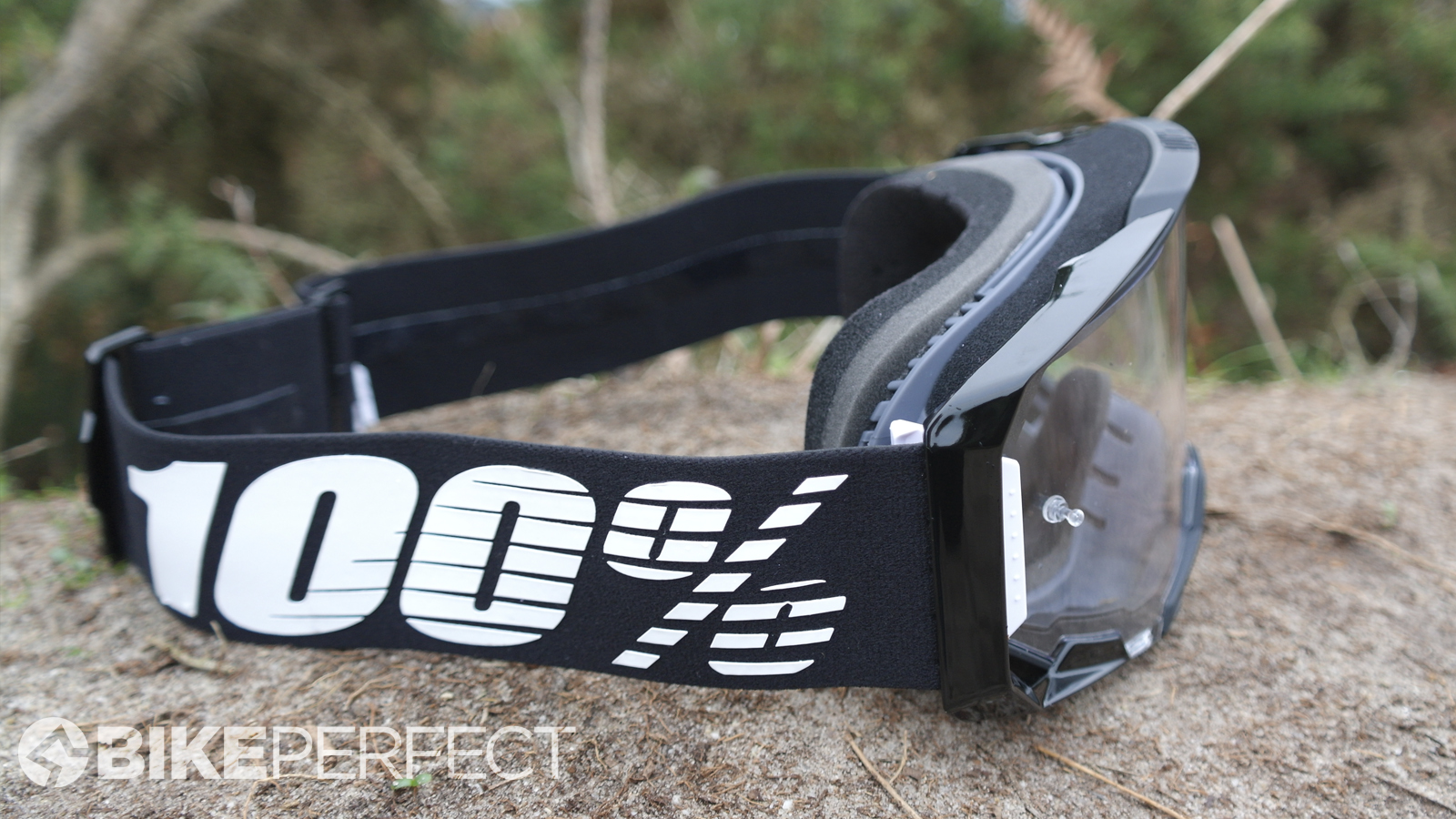
Specifications
Reasons to buy
Reasons to avoid
The 100% Armega features a unique proprietary 'Climate Control' system, made up of a perforated triple-layer foam that draws sweat and moisture away from your face making them one of the most comfortable MTB goggles around.
Our tester Dean Hersey noted that the Armega fitted perfectly with most of the best full-face MTB helmets around and that added to the overall comfort performance.
Dean also rated the simple-to-use lens release system, and the Ultra HD lens tested offered great visual clarity and no fogging. 100% also has an Ultra HD HiPER lens at extra cost which they say is designed to accentuate contrasts and highlight colors.
For all the details and more, read our review of the 100% Armega goggles.
Attributes | Notes | Rating |
|---|---|---|
Performance | No fogging and great lens clarity | ★★★★ |
Comfort | The triple-layer foam makes them very comfy | ★★★★★ |
Colors and customization | A ton of color options | ★★★★★ |
Value for money | Costly compared to others | ★★ |
8. Best budget
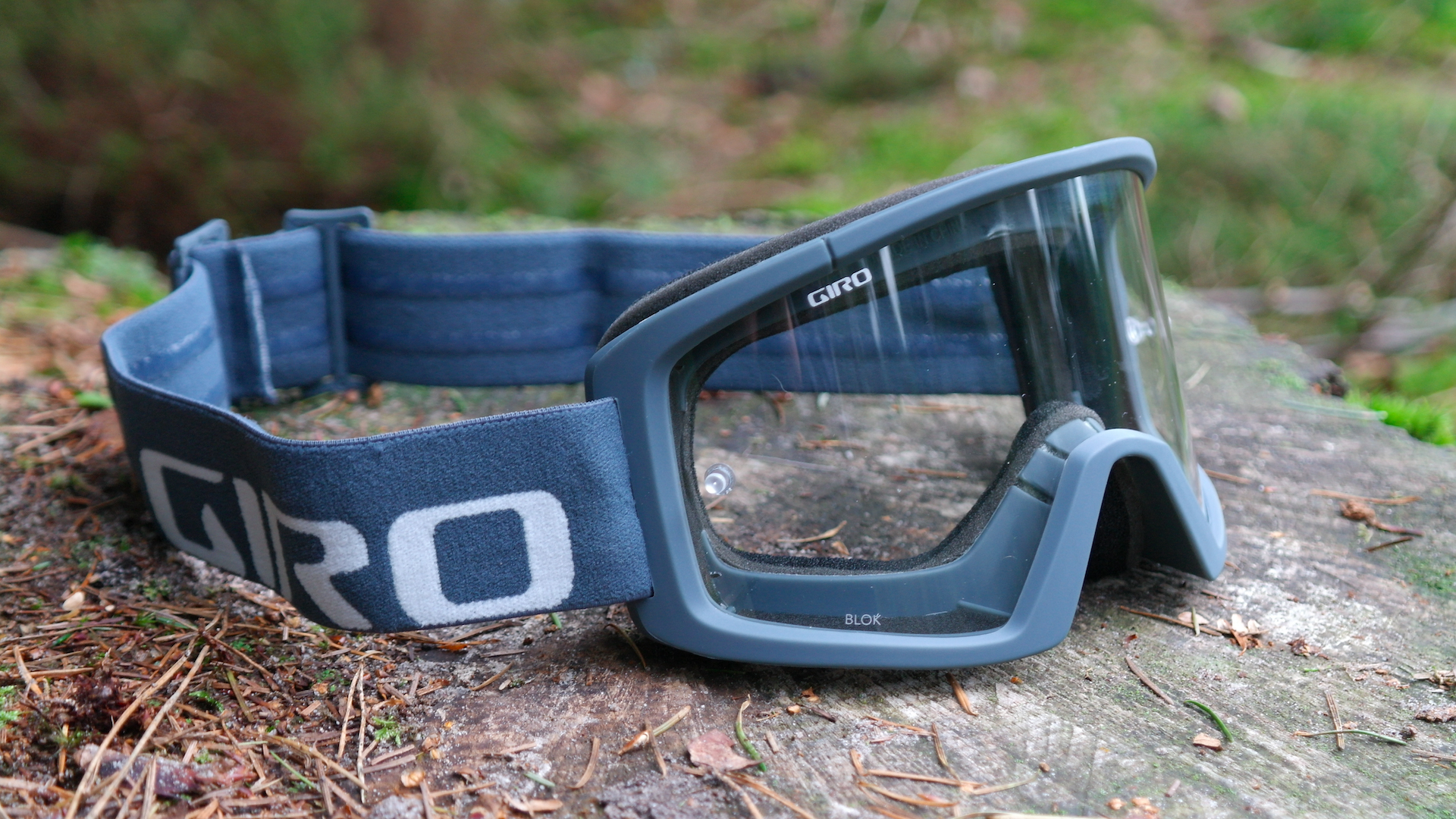
Specifications
Reasons to buy
Reasons to avoid
The Giro Blok MTB goggles are packed with superb features and come in at a very wallet-friendly price point, and on test we found them to be a well-fitting and comfortable MTB goggles. The triple-layer face foam is soft and tapered, adding to the great fit and giving a comfortable seal.
With the goggle boasting a large number of vents all around, there were still some fogging and condensation issues, but its superb all-round performance means this is a negligible issue.
For more, read our full review of the Giro Blok MTB goggles.
The Giro Blok MTB goggles are packed with superb features and come in at a very wallet-friendly price point, and on test we found them to be a well-fitting and comfortable MTB goggles. The triple-layer face foam is soft and tapered, adding to the great fit and giving a comfortable seal.
With the goggle boasting a large number of vents all around, there were still some fogging and condensation issues, but its superb all-round performance means this is a negligible issue.
For more, read our full review of the Giro Blok MTB goggles.
Attributes | Notes | Rating |
|---|---|---|
Performance | Generally great but prone to condensation build up | ★★ |
Comfort | For the price decent levels of comfort | ★★★ |
Colors and customization | Limited, but comes with an extra clear lens | ★ |
Value for money | A budget offering does the job vs pricing well | ★★★★ |
9. Best customizable
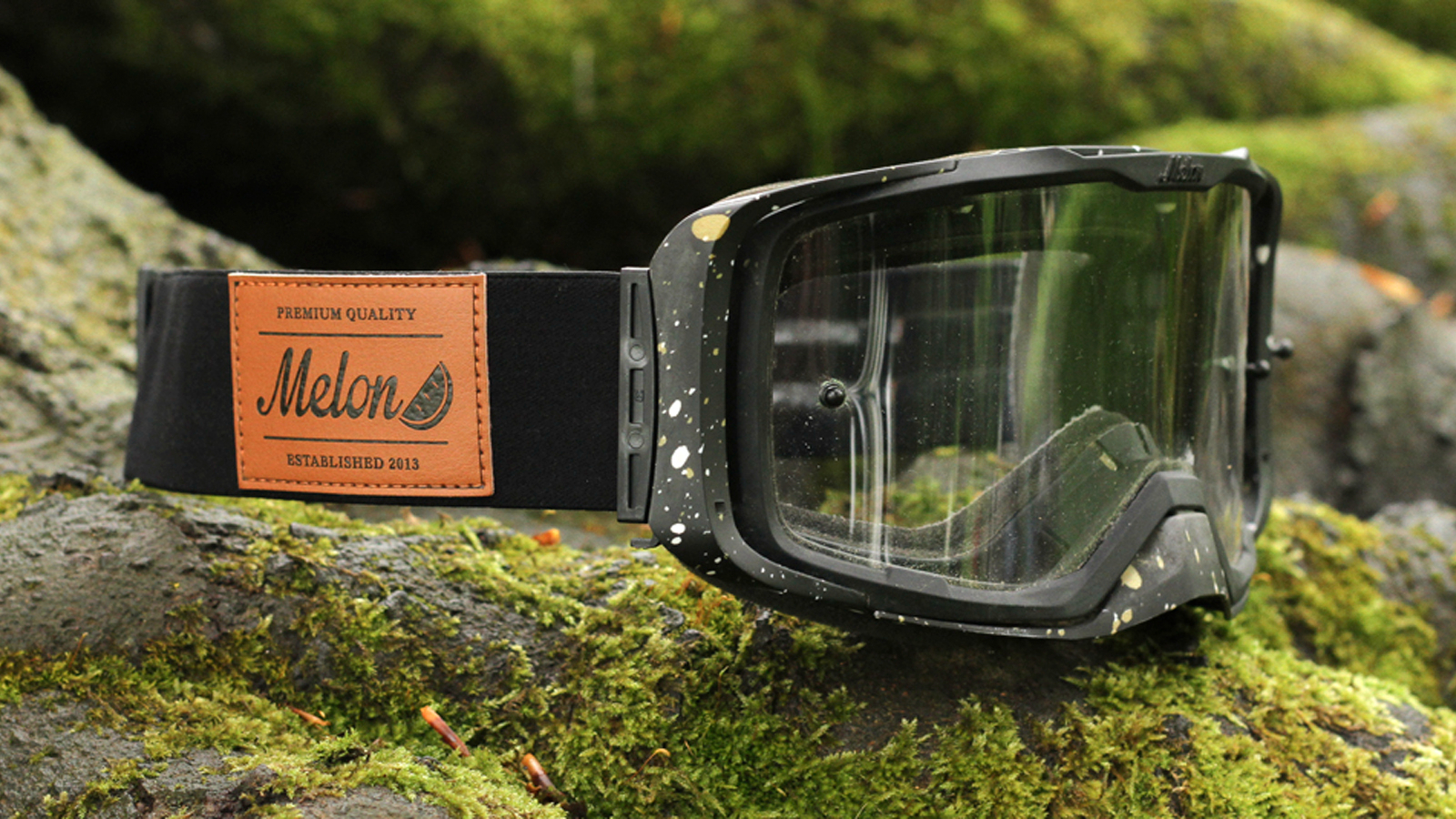
Specifications
Reasons to buy
Reasons to avoid
The Melon Diablo's big selling point is the ton of customization options on offer. Melon Optics allows for almost unlimited choice when it comes to the color of the strap, frame, outrigger, and frame. It means you're more than likely to have your very own unique and custom goggles. The customization isn't the only plus point as our test reviewer James Blackwell noted, "The Diablos also come with great performance and a decent budget price point."
Check out the full review of Melon Diablo Goggles.
The Melon Diablo's big selling point is the ton of customization options on offer. Melon Optics allows for almost unlimited choice when it comes to the color of the strap, frame, outrigger, and frame. It means you're more than likely to have your very own unique and custom goggles. The customization isn't the only plus point as our test reviewer James Blackwell noted, "The Diablos also come with great performance and a decent budget price point."
Check out the full review of Melon Diablo Goggles.
Attributes | Notes | Rating |
|---|---|---|
Performance | Vent well and has a good lens | ★★★★ |
Comfort | Comfy with thick foam and great fit | ★★★★ |
Colors and customization | An almost limitless choice | ★★★★★ |
Value for money | For the price, hard to beat | ★★★★ |
How we test the best MTB goggles
Our experts tested these MTB goggles out over several months in different light conditions and in various weathers. We have assessed their performance in a wide range of categories, including coverage, optical clarity, steaming/fogging, comfort, weight, durability, and cost.
Meet the testers
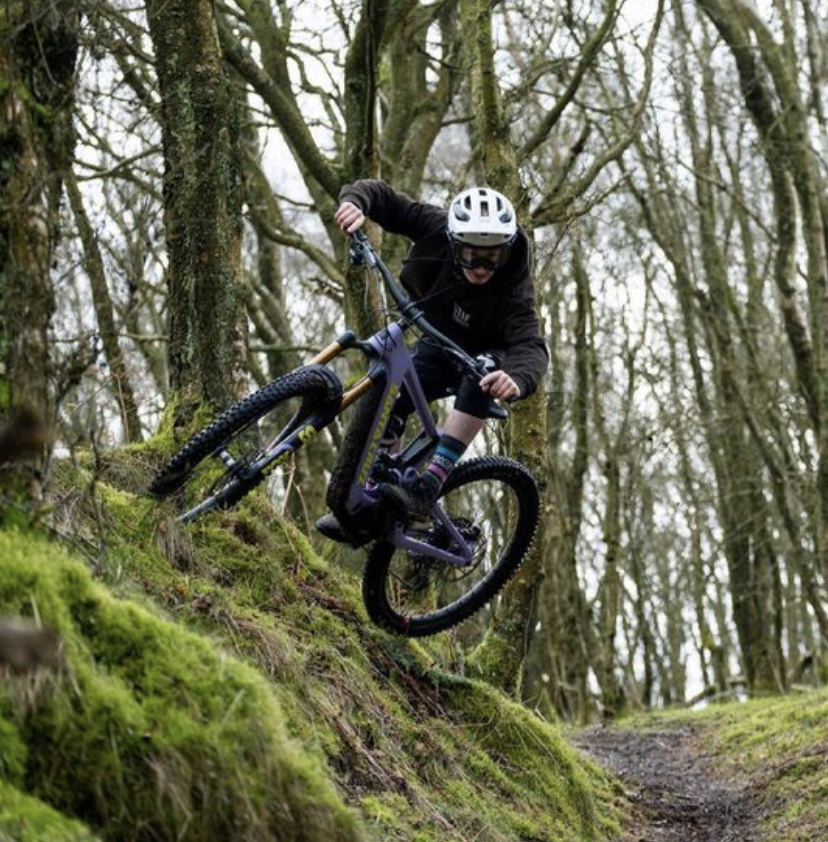
Jim Bland is a review and buyer's guide writer based in North Yorkshire, England. Jim’s chosen riding genre is hard to pinpoint and regularly varies from e-bike-assisted shuttle runs one day to cutting downcountry laps the next.
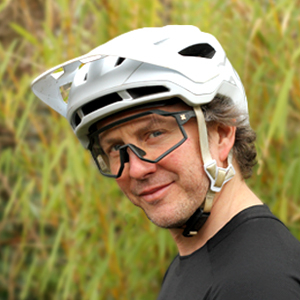
James, aka Jimmer, has 20 years experience working at MBUK, testing bikes and kit. He's ridden everything from XC to DH and knows a good performing mountain bike goggle when he sees one.
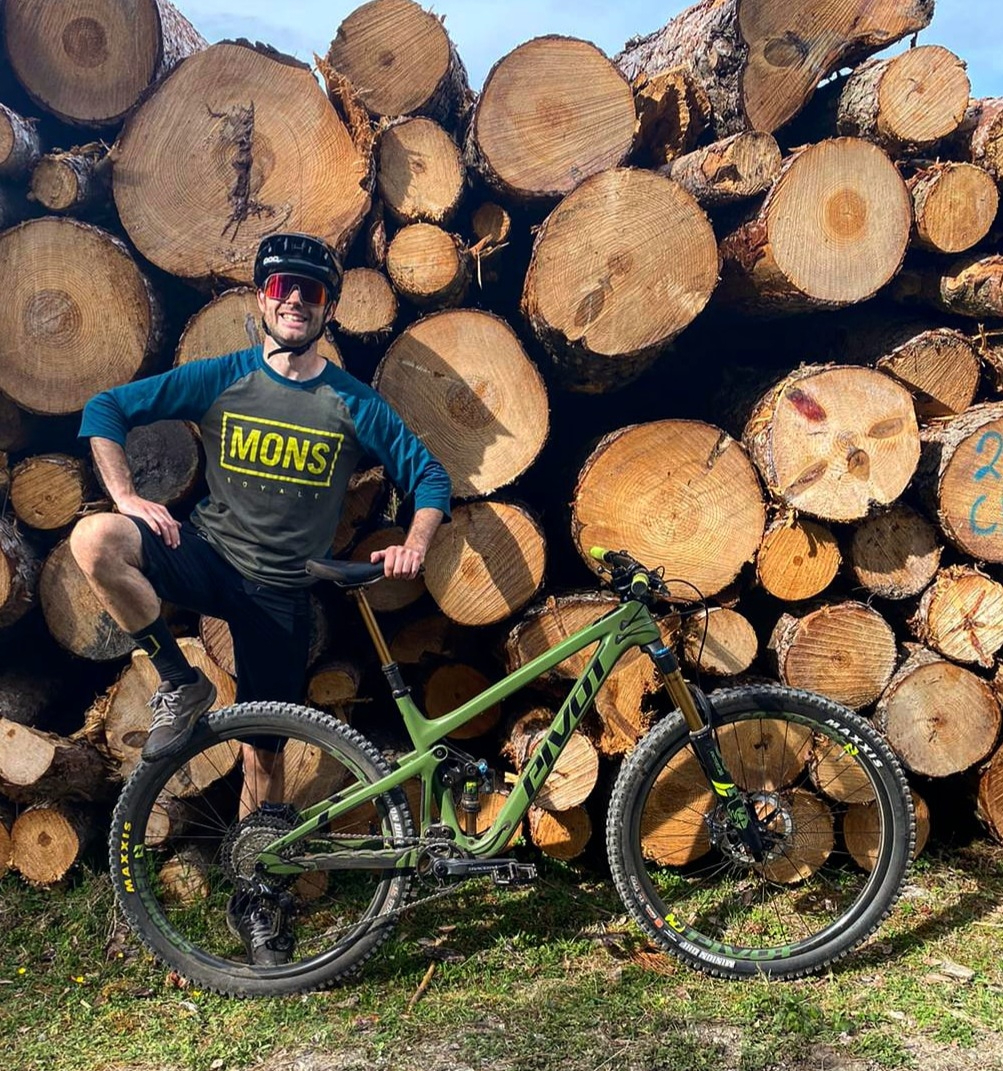
Dean is a freelance cycling journalist and a self-confessed pedal addict based in Dorset, who's fortunate to have the New Forest National Park and the Isle of Purbeck on his doorstep.
How to choose MTB goggles
Do you need goggles for mountain biking?
Not necessarily, however, if you are riding downhill and enduro it is recommended, as the best mountain bike goggles will provide significantly more eye protection than sunglasses. It's particularly beneficial to wear goggles in wet and muddy conditions as they will stop wheel-spray from going in your eyes and potentially causing a crash.
While goggles are great for gravity sports, they aren't as good for cross-country. The extra face-covering means they can get warm if you are doing a long climb and don't have time to whip them off to stash in a bag or pocket at the bottom.
How much do goggles cost?
You get what you pay for, and goggles are no exception. There is a chasm in quality between a cheap set of goggles from a no-name brand and something from a well-known optical company. More expensive goggles will feature interchangeable lenses and straps, higher quality foam, and venting, and the lenses themselves may also have hydrophobic coatings and contrast-improving tints.
With that said, goggles take lots of abuse and lenses are going to get scratched, so it's important to weigh the above against the price.
How do you wear goggles on a mountain bike?
Goggles that don't interact well with your helmet or plug your nostrils because the nose bridge is too narrow are going to cause more problems than they solve. We recommend trying goggles on before you buy, and bringing your helmet with you to make sure everything works together. To assure a good fit, you want the strap to securely grip the rear of the helmet whilst not being overly tight on your face, as this will lead to discomfort and lens fogging.
Tunnel vision is the last thing you want bombing down narrow singletrack. When you try on a pair of goggles, take note if you can see the frame in your peripheral vision as this may affect your vision out on the trail.
What color lenses are best for mountain biking?
If you ride in sunny Southern California, a darker lens will leave you more comfortable, but if your trails snake through the trees with a dense overhead canopy, a light or even a clear lens will be the go-to. That said, in lighter woodland situations a red lens can actually make it easier to pick out trail details ahead.
Lots of companies have their own versions of contrast-boosting technology, and they all work to varying degrees.
Depending on the lens, some brands will add hydrophobic and anti-fog coatings to their lenses, and these can be a godsend in wet weather or riding behind your roots-riding mate.
Can you replace goggle lenses?
Most brands offer interchangeable optics. The reality is your lenses are going to get scratched, and there is not a whole lot you can do about it. When you're shopping for goggles, have a look at how much spare lenses cost and factor that into potential costs.

Graham Cottingham joined the BikePerfect team as our senior tech writer in 2020. With over 20 years of riding experience, he has dabbled in downhill, enduro, and gravel racing. Not afraid of a challenge, Graham has embraced bikepacking over the last few years and likes nothing more than strapping some bags to his bike and covering big miles to explore Scotland's wildernesses. When he isn’t shredding the gnar in the Tweed Valley, sleeping in bushes, or tinkering with bikes, he is writing tech reviews for BikePerfect.
Rides: Cotic SolarisMax, Stooge MK4, 24 Bicycles Le Toy 3, Surly Steamroller
Height: 177cm
Weight: 71kg
- Dean HerseyFreelance writer
- Jim BlandFreelance writer
